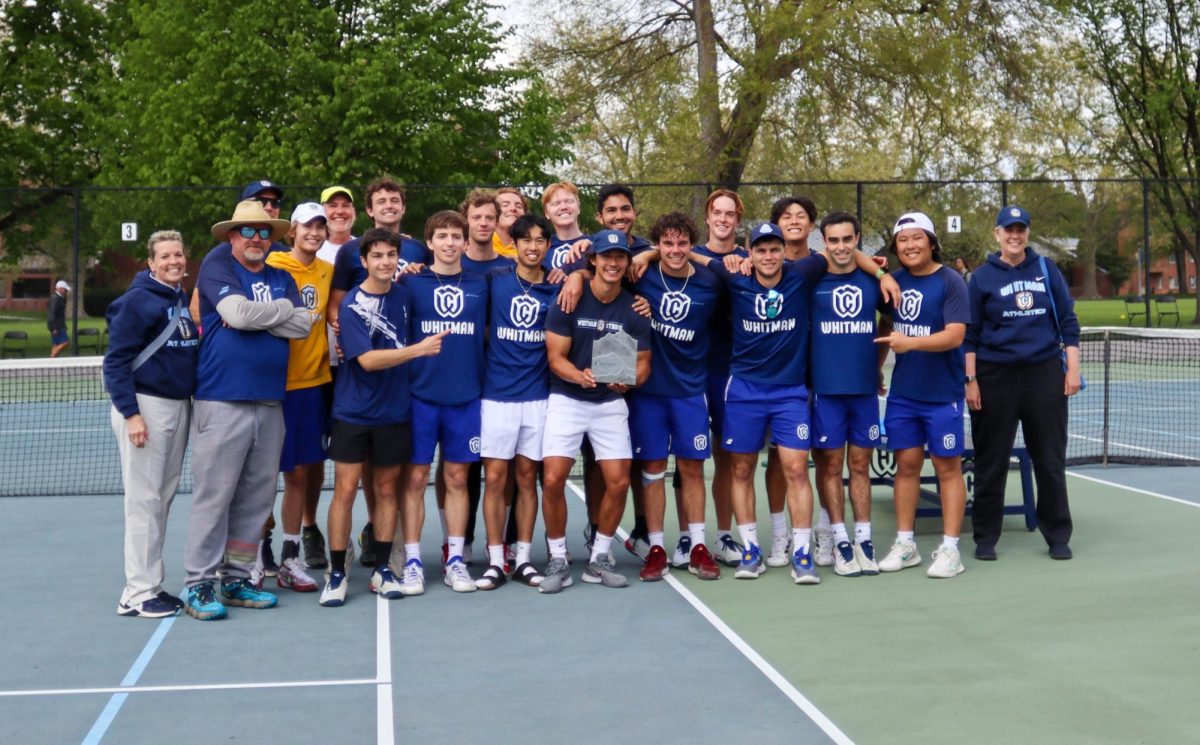From outdoor basketball and volleyball to ultimate frisbee in the cold winter months, the intramural schedule drastically changed from previous years. For the most part, though, Whitties met those changes with the same enthusiasm for intramurals that has distinguished the college in the past.
The overall positive reception to all the changes surprised even the IM Committee chair Michael Warren Anderson.
“I was expecting a lot of resistance from people just having to rearrange the sports,” said Anderson. “We were expecting a lot of people being unhappy.”
Change to the normal intramural schedule began last year when volleyball was dropped in favor of tennis after spring break due to the start of the Sherwood renovations.
Before last year, the schedule for intramurals during spring semester had consistently been indoor, with five-on-five basketball before spring break and then softball, ultimate, bowling and volleyball. This year, the committee moved ultimate to January and February while adding IM Frolf to the list of sports already available. However, due to poor weather a number of the games were rescheduled after spring break. Due to those conditions, bowling and both frisbee sports finished two weeks after the end of spring break.
The second portion of the schedule brought basketball outside due to the renovations to Sherwood and reduced the team sizes to three-on-three while adopting pick-up style rules.
Some Whitties really responded to the move outdoors.
“IM basketball worked really well, it was fun and you got a lot of action with the smaller teams, the rules worked well,” said first-year John Henry Heckendorn in an e-mail. “My team had no complaints and enjoyed the less formal setting.”
Other students missed the full court style of play with scoreboards and referees. Anderson was sympathetic to these students, but also viewed the new rules as a success. While his term as committee chair is over once he graduates later this month, Anderson sees no reason why the outdoor pick-up style of IM basketball couldn’t exist alongside football in the fall, while returning to the indoor style of game right after winter break.
Volleyball also found its way into the spring schedule after initially being left out for what would have been the second year in a row.
“It seemed that threatening to not do volleyball made volleyball a success,” said Anderson. “The last couple of years there had been very few teams and people weren’t very interested in it so this year we said we weren’t going to have it as part of this rearranging. We then got some nasty e-mails and decided ‘okay, why not?'”
After the initial doubts, Anderson and a number of other players enjoyed having volleyball outside.
“We had great weather for all of our games,” said Andrew Matthewson in an e-mail. “Soaking up the sun while playing with friends was a wonderful way to start off the spring.”
The renovations had no affect on the other two sports this spring, softball and tennis, both of which ran smoothly.
Overall, Anderson was happy with how the altered scheduled worked out. The committee even balanced their budget in spite of a drop in roster spots for basketball, a major source of money typically for the committee. The committee was forced to raise costs for some sports to make up the difference, but those costs will return to their normal levels again next year.
Anderson hopes that some of the lessons from this spring’s altered schedule get carried over into next year’s intramurals.
“My recommendation for next year’s chairs is to do more sports with fewer teams. When you do sports like football and you do tons and tons of teams, you run into issues of field availability or court availability,” said Anderson. “If you have multiple sports going on you’re able to reach more people with fewer problems arising.”
Another change Anderson listed as imminent was a move away from Bowlaway lanes for bowling and into Stardust lanes.



